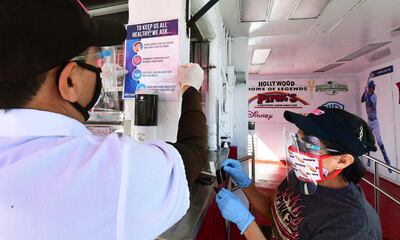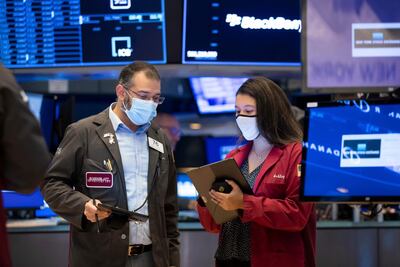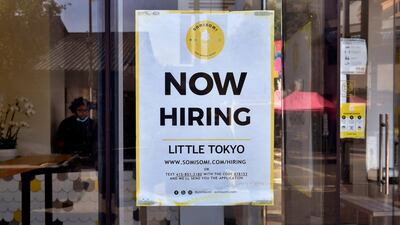The number of Americans filing new claims for unemployment benefits dropped below 400,000 last week for the first time since the Covid-19 pandemic started more than a year ago, pointing to strengthening labour market conditions.
That was underscored by other data on Thursday showing private payrolls increasing by the most in 11 months in May, spurred by robust demand amid a rapidly reopening economy.
The data supported expectations that job growth accelerated last month, though shortages of workers and raw materials continue to loom over the labour market recovery.
"The economic reopening is continuing and should be positive for job growth," said Rubeela Farooqi, chief US economist at High Frequency Economics in White Plains, New York. "But supply and demand imbalances are creating frictions in the labour market that could be a headwind in the near term."
Initial claims for state unemployment benefits fell 20,000 to a seasonally adjusted 385,000 for the week ended May 29. That was the lowest since mid-March 2020.
Economists polled by Reuters had forecast 390,000 applications for the latest week.
The fifth straight weekly decrease in claims was led by Texas and Florida.
The pandemic is subsiding because of vaccinations, allowing authorities to lift restrictions on businesses and accelerating the economy's reopening, which has led to a surge in demand that is pushing against supply constraints.
Though claims remain well above the 200,000 to 250,000 range associated with healthy labour market conditions, they have dropped from a record 6.149 million in early April 2020.
They could decline further as Republican governors in 25 states, including Florida and Texas, are cutting off unemployment programmes funded by the federal government for residents starting next Saturday.
These states account for more than 40 per cent of the workforce and about four million workers will be affected.
The benefits being terminated early include a weekly $300 unemployment subsidy, which businesses say is discouraging the jobless from seeking work.
The expanded benefits will end in early September across the country, with economists estimating unemployment benefits payments totalled $35.1 billion in May.

Some doubt that an early termination of these benefits will lead to a surge in hiring and say economic growth could slow.
"We don't know if cutting this lifeline for some jobless workers is going to lead to greater payroll employment gains," said Chris Rupkey, chief economist at FWDBONDS in New York. "Less money paid out as unemployment benefits will slow economic growth if it does not lead to new paychecks quickly."
Stocks on Wall Street were trading lower and the dollar rose against a basket of currencies as US Treasury prices fell.
Hiring pickup
But hiring appears to have improved in May, with the ADP National Employment Report showing private payrolls increased by 978,000 jobs, the biggest increase since June last year, after rising 654,000 in April.
Economists had forecast private payrolls would increase by 650,000 jobs in May.
The ADP report is jointly developed with Moody's Analytics and was published before the Labour Department's more comprehensive and closely watched employment report for May on Friday.
It does, however, have a poor track record predicting the private payrolls count in the employment report because of methodology differences.
According to a Reuters survey of economists, non-farm payrolls likely increased 650,000 jobs in May after rising only 266,000 in April.
But this forecast is tempered by widespread worker and raw material shortages documented in business surveys.
In a third report on Thursday, the Institute for Supply Management said its non-manufacturing activity index rebounded to a record high of 64 in May from a reading of 62.7 in April.
But businesses in the sector, which accounts for more than two thirds of the US economy, complained about the dearth of workers.

Some reported offering "cash incentives of $50" for people who show up for an interview.
The findings mirrored an ISM survey on manufacturing this week showing shortages of parts and workers were forcing short-term shutdowns at factories.
The Federal Reserve's "Beige Book" report of anecdotal information on business activity collected from contacts nationwide showed on Wednesday that "it remained difficult for many firms to hire new workers, especially low-wage hourly workers, lorry drivers and skilled tradespeople".
Workers are scarce despite about 10 million Americans being officially unemployed.
Expanded unemployment benefits, problems with childcare and fears of contracting the virus, even with vaccines widely accessible, as well as pandemic-related retirements have been blamed for keeping workers home.

